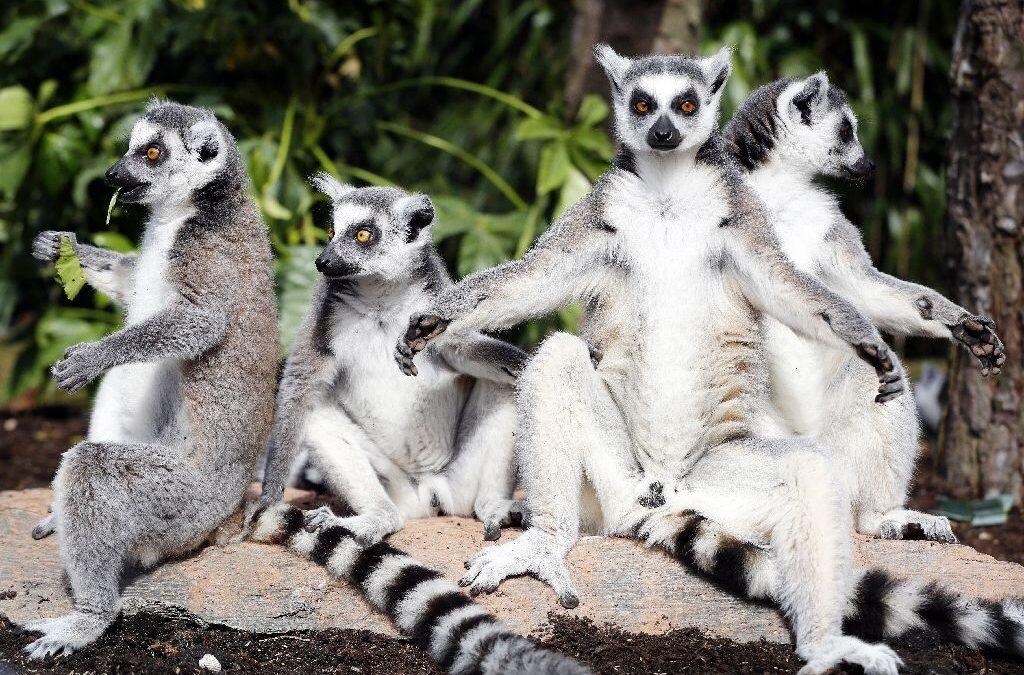Threatened by habitat loss and hunting, Madagascar’s lemurs, a critically endangered species, are finding refuge in a private sanctuary on this vast Indian Ocean island.
At Nahampoana game reserve, one of the wide-eyed creatures — the island’s signature primate — appears between long bamboo stems, while a little further down three others play in the trees on a riverbank.
Nearly two decades ago, this 50-hectare (123 acre) former French colonial garden was turned into a privately run game reserve.
It is now home to 150 lemurs.
“Bamboo lemurs come here naturally, because it’s quiet and they are protected in the reserve, and the numbers are increasing,” Leonard Dauphin, the sanctuary’s supervisor, told AFP.
There are around 100 known species on Madagascar, but only six are found in the park, among them the iconic ring-tailed lemurs which are probably the most widely recognised.
It is only on this island that lemurs appear in the wild, having evolved separately from their cousins the African ape over millions of years, and in the grounds of the reserve they roam freely among the frogs, turtles and crocodiles also living there.
The main threat facing Madagascar’s lemurs is deforestation, which is one of the most serious environmental issues facing Africa’s largest island.
“Before, it was paradise. The clouds would flirt with the mountains because of the forests,” says Gauthier, a park guide pointing to Saint-Louis, the area’s highest mountain.
“Now it’s a desert. The trees are being cut everyday.”
Coffers empty
For nearly two decades, Nahampoana reserve has survived thanks to sponsor Aziz Badouraly, who owns a travel agency in the nearby town of Fort-Dauphin.
Around 3,000 tourists visit Nahampoana reserve every year — but the numbers are not enough to keep it afloat, and Badouraly says it needs help from the government.
“We would like the state to help us more, or at least build a good access road from the city to the reserve,” he says.
But authorities on the island, where nine out of 10 people live below the poverty line, can barely spare any funds to implement national biodiversity conservation and protection programmes.
Julio Razafindramaro Pierrot, who governs the southeastern Anosy region where the sanctuary is situated, acknowledges the problems caused by the widespread practice of destroying forest to make way for crops, but says the state’s hands are tied.
There is a need “for agricultural infrastructure be put in place to allow the villagers to grow (crops) and reduce pressure on the forest,” he says, pointing to the “huge potential” for other forms of agriculture.
“But the region… does not have the means to embark upon projects of this nature.”
‘Our natural wealth’
Conservation experts say there is a dire need for funding to ensure the survival of the lemurs, with fewer than 10,000 left on the island.
Estimates from the World Wide Fund For Nature (WWF) suggest 94 percent of lemur species are threatened with extinction.
“Because lemurs are only found in one place on earth, it is critical that we figure out how to save them along with other animals and plants that can only be found there,” Jeff Flocken, a director with the International Fund for Animal Welfare (IFAW), told AFP.
Trade in lemurs is prohibited by the Convention on International Trade in Endangered Species (CITES) because the species are critically endangered.
“If they are not protected, (they will end up) like many species that we can’t find anymore,” says Gauthier.
“They are our natural wealth.”
Around Nahampoana, local efforts to try to educate the villagers — who claim the lemurs damage their crops — appear to be beginning to bear fruit.
“We are working well with the villagers,” says Dauphin.
“For example, we sell them lychees from the reserve at a price which is three times cheaper than at the market. In exchange, we ask them to respect the animals,” he says.
“It’s in everyone’s interest.”
Source: AFP











